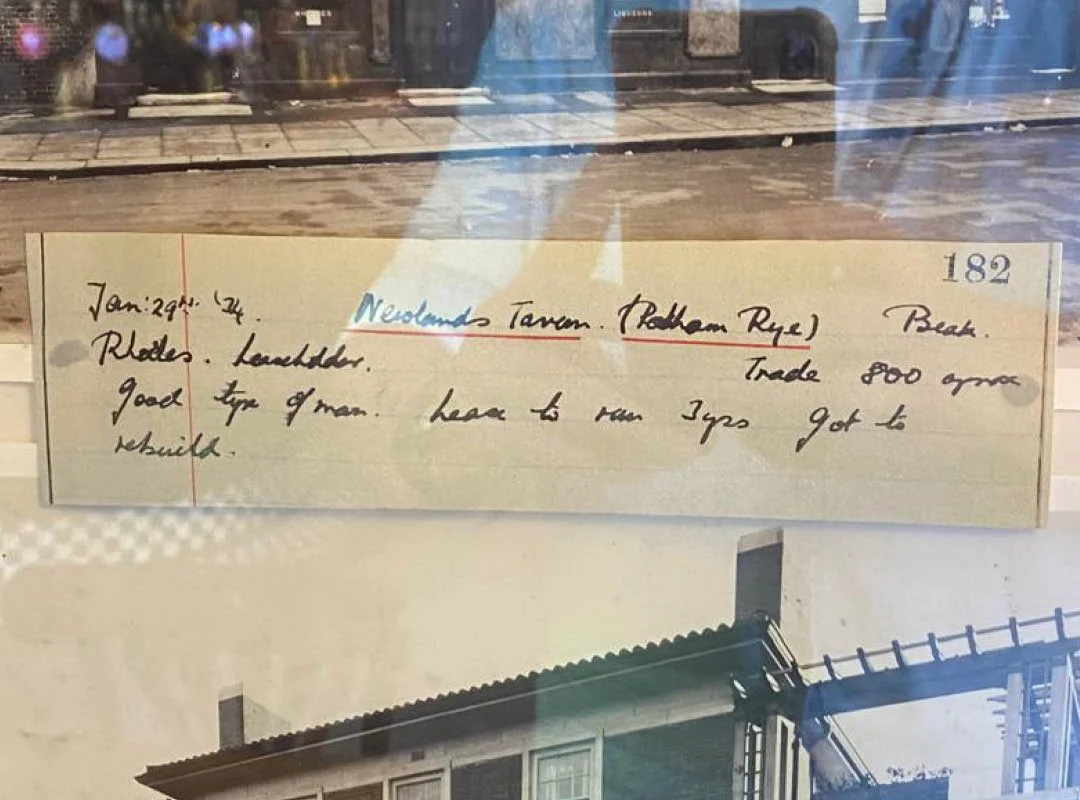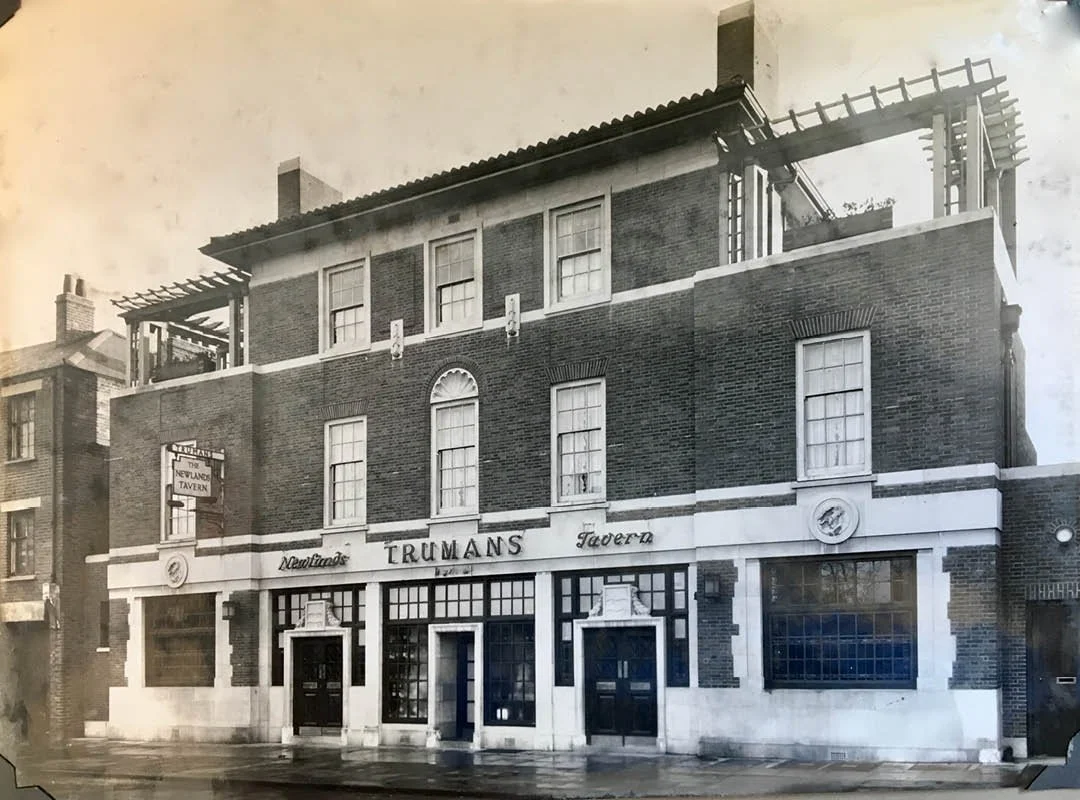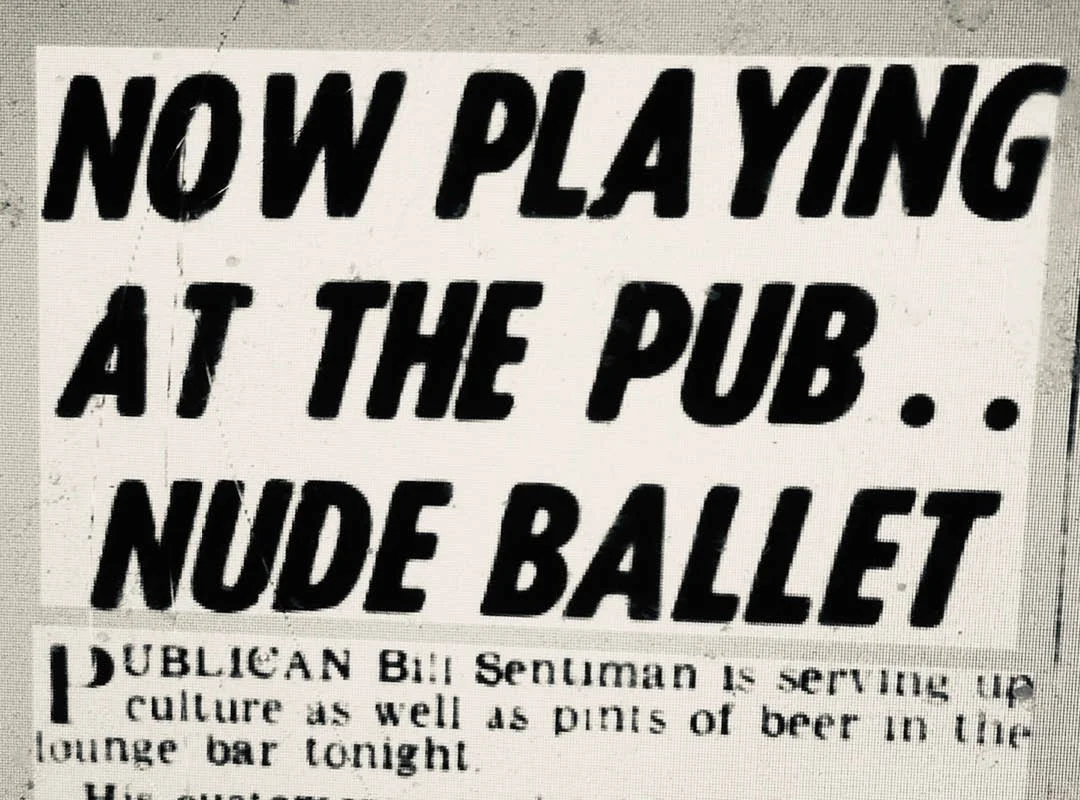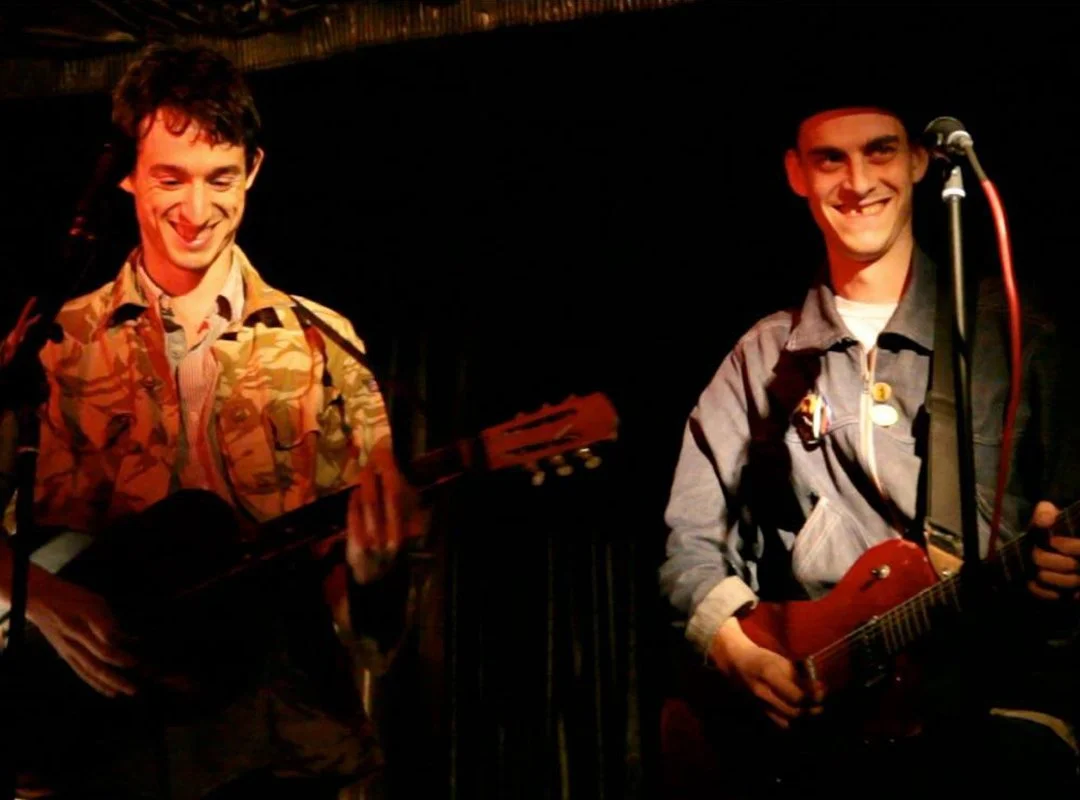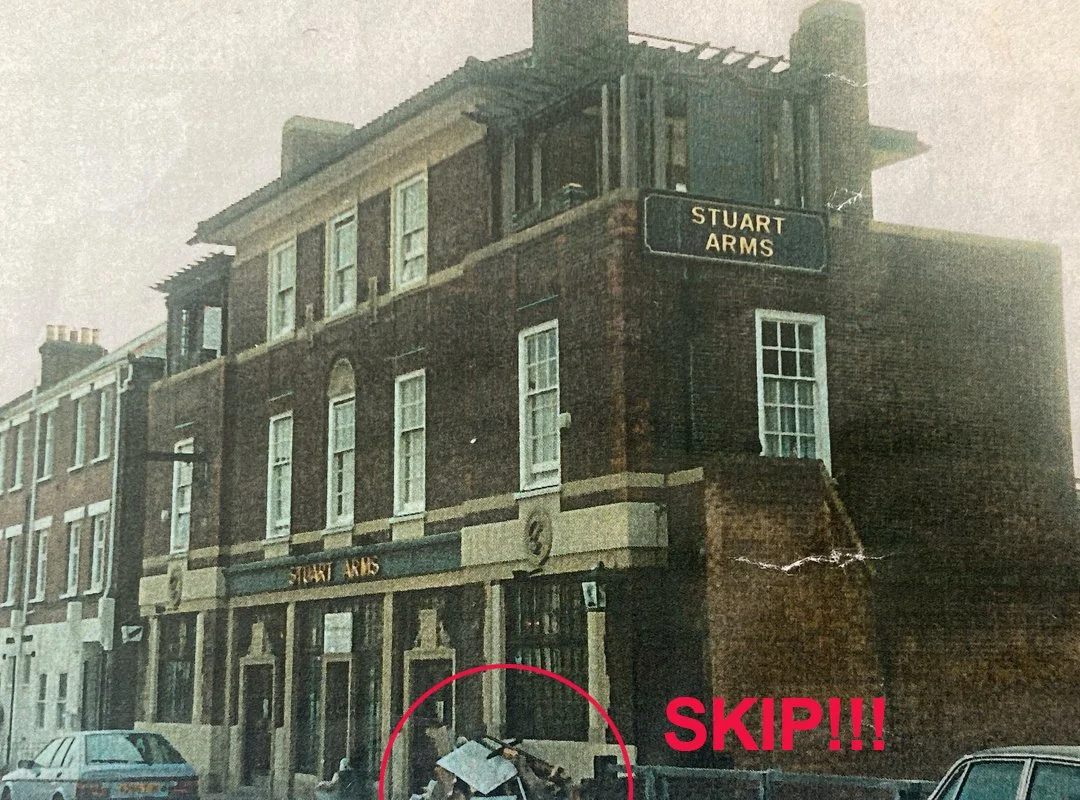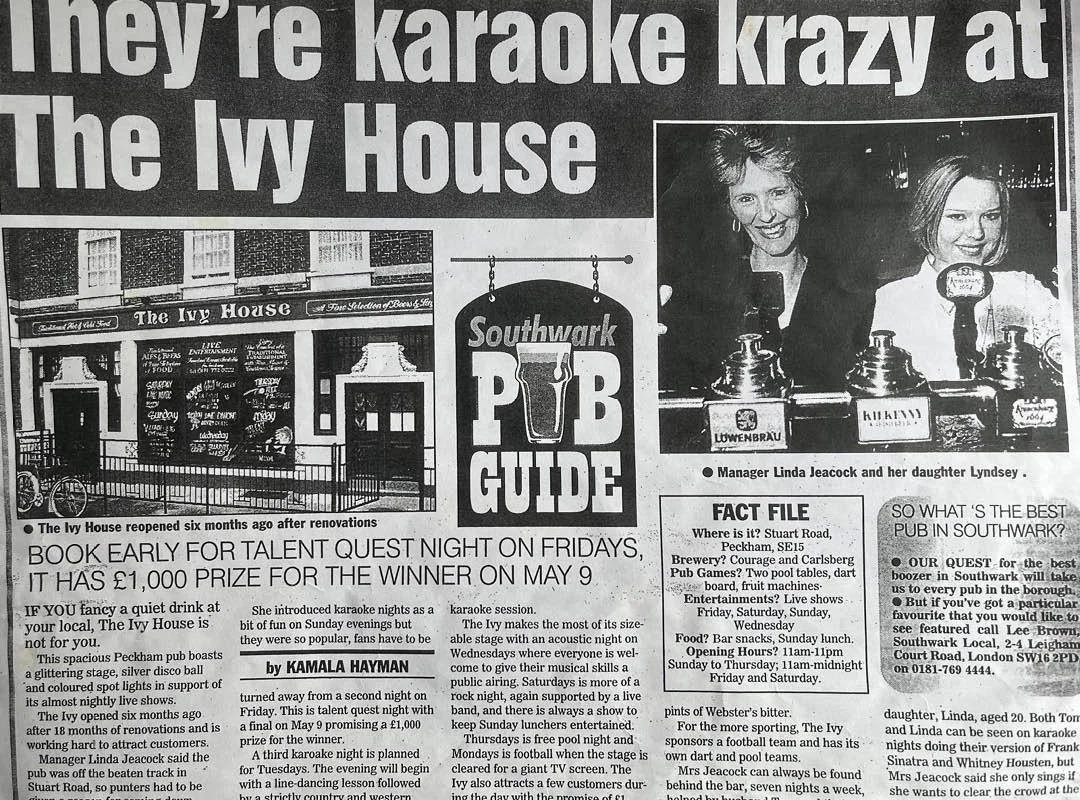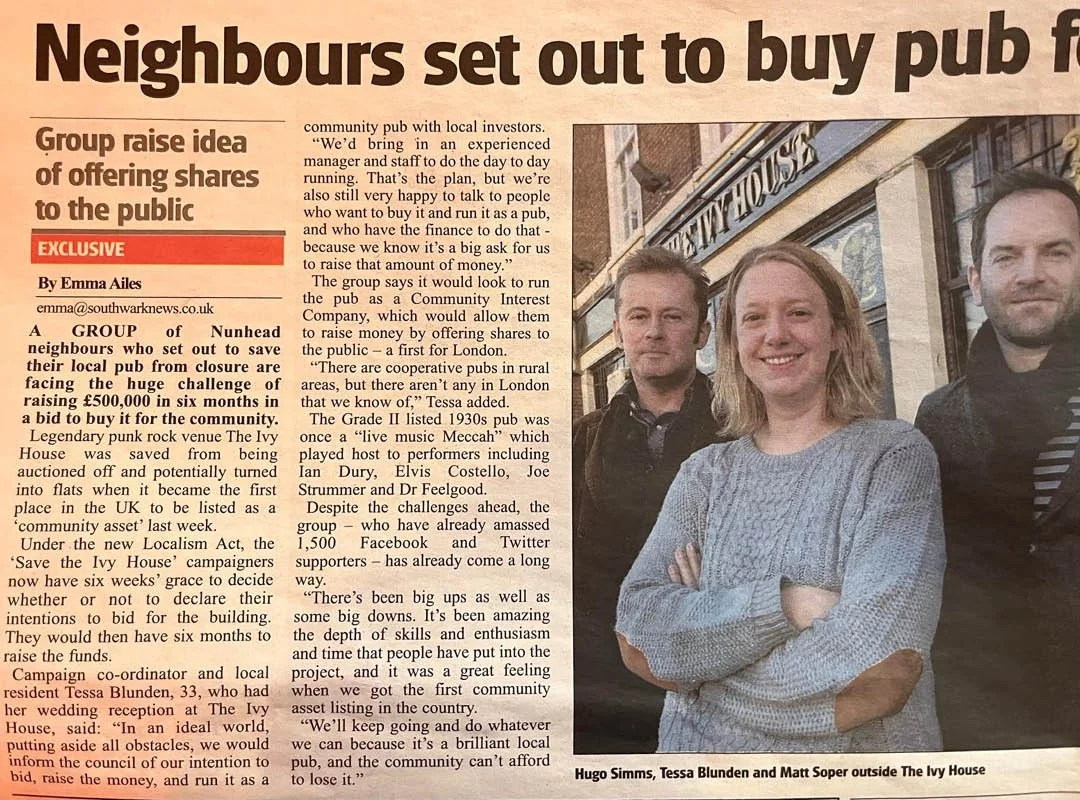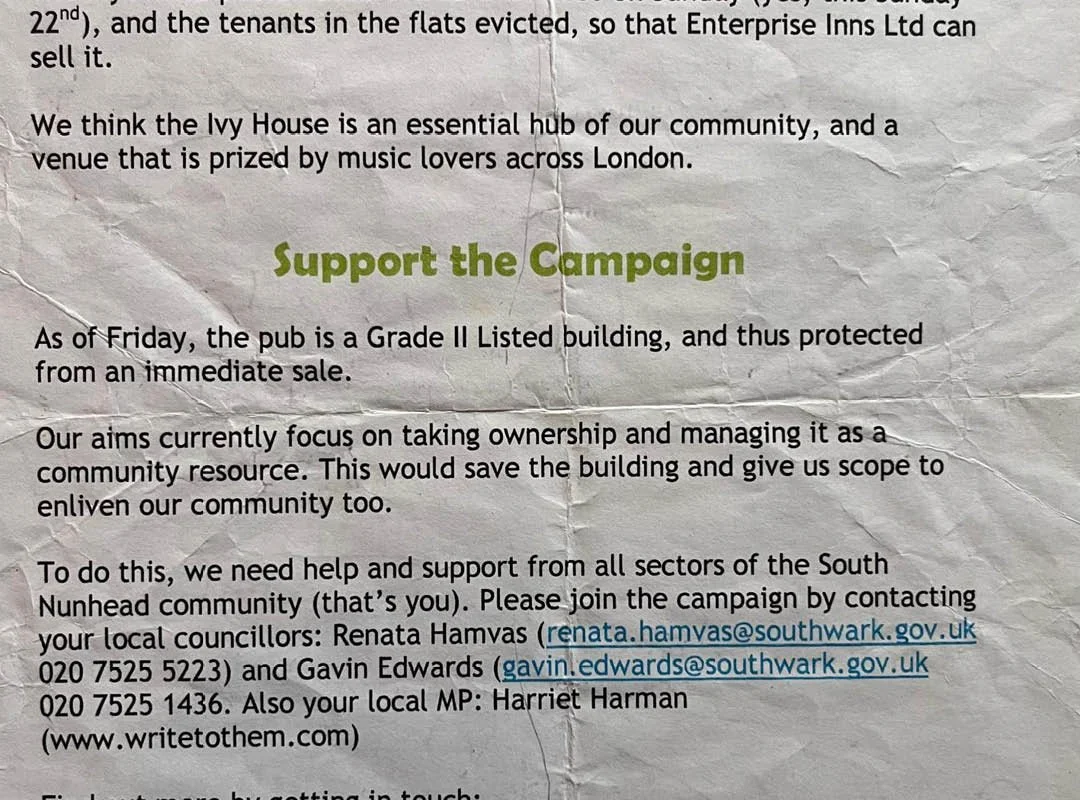SERVING THE COMMUNITY FOR OVER 150 YEARS
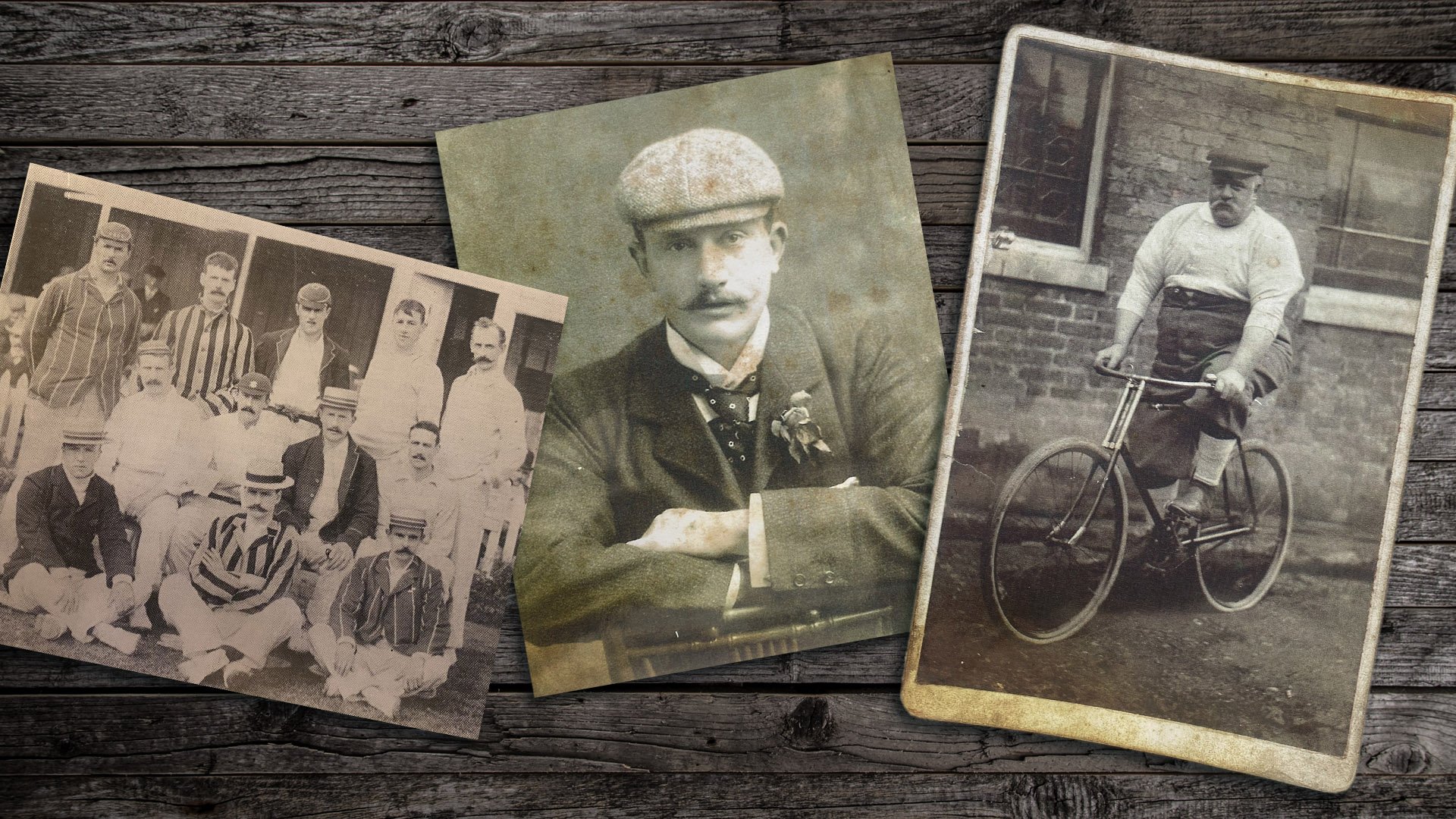
From a Beer House to a Public House, from the Newlands Tavern to the Stuart Arms and finally, to the Ivy House, there has been a drinking establishment on the site since 1865.
It’s always been a place where the local community comes together to drink, eat and enjoy the tunes. As a result, there’s a rich history of the people who walked these floors long before we did.
From anecdotal accounts of WG Grace supping a pint after cricket, to Ian Dury pulling pints behind the bar, there’s plenty to delve into. If you’d like to know more, feel free to read below.
The Ivy House History: PART ONE, 1860-1922
-
![]()
1860
Thomas Dickason moved to the area from Marylebone. He erected several of the first buildings in the Newlands area, and a house to sell beer was a priority. No photographs exist of him, however, this one featuring his granddaughter, Kate, dressing up as him is a worthy replacement.
-
![]()
1862
Dickason’s first building, standing lonesome on an 1862 map, was originally built as the family home. He simultaneously ran a dairy with a position at the foot of Nunhead Hill with fields sloping down beyond.
-
![]()
1865
Dickason was proudly listed in the Post Office Directory as ‘Beer Retailer, Newlands’. However, it was many years before he was granted a full Victualler’s Licence to sell spirits, wine and food as well.
-
![]()
1885
Dickason finally became a Licensed Victualler. ‘THE NEWLANDS TAVERN, PECKHAM RYE…Excellent accommodation for Cricket, Volunteer Football and other Clubs’ Suppers, &c. Old Friends and new faces always welcome. THOMAS DICKASON’.
-
![]()
1890s
The Newlands Tavern was at the heart of the Peckham Rye community. Thomas’s son Joseph founded the Newlands Music Society, and his grandsons Tom and Syd joined Honor Oak Cricket Club, which acted as a feeder to Surrey Cricket Club. With Tom serving as team captain for a number of years, the 'Brothers Dickason' were a feared combination for any opponent.
-
![]()
1896
Thomas Dickason snr. passed away, and Joseph took over. Surrey cricketers regularly attended, including Jack Hobbs. Concerts generally attracted men in evening dress singing songs with titles such as ‘The Yeomen of England’ and ‘It’s a Good Job I had My Mother with Me’.
-
![]()
1909
Joseph Dickason passed away. His children Tom, Syd and their sister Kate took over, with the younger brother Syd adopting the role as landlord, but he struggled with mental health and was admitted to Bedlam Hospital where he died in 1913.
PART TWO, 1922-1940s
-
![]()
1922
Edgar Rhodes agreed on a 14-year lease with Trumans Brewery. He embraced community life, being a plot-holder at the allotments, and held racing pigeon shows (the birds were put up for show, not racing inside the pub!).
-
![]()
1934
The fateful decision was made which ensured that there was a pub to be saved in the 21st Century. A young Trumans’ employee called Maurice Pryor visited, then simply wrote ‘Got to rebuild’.
-
![]()
1937
Terms were agreed with building firm Holloways, working with Trumans’ in-house architect A.E. Sewell. The local press reported that ‘a new tavern of the most modern and elaborate design will arise from the ruins’.
-
![]()
1938
The pub’s re-opening was set for 4th October. However, when the day came, workmen were still flat out. The South London Press reported: “The ‘new’ house was packed” and noted especially the “social hall to seat 150 people for…the Newlands Musical Society”.
-
![]()
1941
Edgar Rhodes passed away. His wife Kathleen took over. During the war, long-standing local resident Hettie Sarluis recalled beer being surreptitiously delivered to houses via milk float.
-
![]()
1944
On 1st July, a V1 bomb struck 100 yards away. Later surveyors described the new pub as being built ‘like Duplo’, likely saving it from destruction. However, all houses between the pub and Cheltenham Rd were destroyed and seventeen people died. Photo shows V1 damage at corner of Athenlay and Fernholme Roads.
PART Three, 1950s-2012
-
![]()
1950s-1960s
Music and dance were on the agenda (photo above from 1962 - Arthur the ‘pot boy’ on drums). Strong anecdotal evidence supports the notion that Status Quo played at the pub in their pre-denim years. Also Pink Floyd, possibly in 1964 when they were known as Leonard’s Lodgers or The Tea Set.
-
![]()
1971
Landlord Bill Fentiman built the stage for an exclusive evening of nude ballet. The event was major news in the tabloids, both in anticipation of the show and the denouement when a misted screen meant the sell-out audience couldn’t see anything.
-
![]()
1972
Bill’s brother Reg and his wife Sue, a young music-loving couple, took over, embracing the fledging pub-rock movement that paved the way for punk. Photo shows Nick Lowe and Ian Gomm of Brinsley Schwarz at ‘The Newlands’ (credit Bob Inman).
-
![]()
1976
The Fentimans departed. Elvis Costello, Joe Strummer, Ian Dury, Dr Feelgood, The Stranglers, Nick Lowe, Tom Robinson, Graham Parker, Rory Gallagher, Jeff Beck and many others had played there (Photo shows ‘Laughing Jack Gasbag’ rehearsing in 1975. Credit, Wally Wills).
-
![]()
1985
At the dawn of punk, the pub slipped down the gig pecking order. By 1985, only the front west bar (photo above in the 1950s) was regularly open. And after 120 years of being called The Newlands Tavern, the name had changed to The Stuart Arms.
-
![]()
1992
The ballroom returned to regular use with Andy Hankdog’s legendary Easycome Acoustic Night. Artists appearing during its 20-year run at the pub included The Noisettes, Florence Welch, David Gray, Fat White Family (in photo 2011 – credit, Lou Smith), Flameproof Moth, Misty Miller and a plethora of more local musical legends.
-
![]()
1995
The Stuart Arms closed for extensive renovations, re-opening at the end of 1996. There were major changes, most notably the loss of the west bar and the name had changed again. It was now The Ivy House (something to do with the owner’s mum Ivy apparently!).
-
![]()
1998
New managers Linda and Tom Jeacock started Karaoke evenings where singers were backed by a live band and large sums of money were up for grabs. The red curtains still adorn the stage. If an act wasn’t going down well, a button – still there too – was pressed and the curtains slowly closed.
-
![]()
2004
Avant-garde musician and filmmaker Hugh Metcalfe brought his cabbage hat and improvisational ‘right weird’ Klinker Club, founded in 1982, to the pub. It wasn’t unusual to see a band noisily unplugging instruments only to then realise this was in fact their act. Hugh still runs the club in Suffolk.
-
![]()
2008
Martin and Vivienne Soan’s anarchic comedy evening, ‘Pull The Other One’ arrived. Alan Davies, John Hegley, Jo Brand and Stewart Lee were among the big names sharing the stage with a pot-pourri of performers. Sue Whitehead and Nygel Packett launched the folk night ‘The Goose is Out’, still going strong.
Saving the Ivy House: 2011-2013
-
![]()
November 2011
With rumours of the pub’s demise rife, Sue and Reg Fentiman, the 1970s landlords were interviewed. The South London Press agreed to run it. It was felt The Ivy House might have a good case for a Grade II Listing. With that in mind, the article was brought to the attention of former pub regular Neil Pettigrew.
-
![]()
December 2011
Neil’s connection and his role within CAMRA galvanised him to join others working behind the scenes. They agreed something must be done quickly. Neil submitted the listing application on 2nd December.
-
![]()
January 2012
English Heritage visited and were especially excited about the surviving bar spittoons. The time scale for a successful listing was five months, meaning the beginning of May.
-
![]()
Wednesday 18th April 2012
Owners Enterprise Inns lined up a developer buyer and the pub was to close after Sunday trading. Would the historical interior be ripped out? Fast-tracking the Grade II listing before the weekend was the immediate priority. But the person to talk to at English Heritage was away until Monday – too late.
-
![]()
Friday 20th April 2012
At 2.30pm, Neil received the call saying that the DCSM Secretary of State had agreed to make The Ivy House a Grade II Listed Building. There was great rejoicing.
-
![]()
April 2012
The potential buyer pulled out of the deal. Approaching Enterprise regarding a temporary licence was explored, with a longer-term plan focussing on a community bid to purchase the freehold. A steering group of seven was formed.
-
![]()
September 2012
The ‘For Sale’ sign disappeared. The pub was bought by a businessman who said he might consider working with the community, but he put the pub up for auction, set for October 29th.
-
![]()
September 2012
The 2011 Localism Act came into the story. The Act contained “a wide range of measures to… give local communities greater control over local decisions”. ‘The Asset of Community Value’ (ACV) could give a community the power to stop the clock when faced with losing a valued local building (such as a pub!).
-
![]()
22nd September 2012
A successful application was made in the name of – and with the support of – The Peckham Society, to have the pub listed as an ACV. A six-week moratorium with a bid being prepared triggered the longer six-month moratorium.
-
![]()
December 2012
An offer of funding came from the Architectural Heritage Fund, for a loan of £550,000, including £50,000 in working capital. But the pub was valued at around £800,000. A grant application was made to the Social Investment Business (SIB) Group.
-
![]()
January 2013
The SIB requested a visit, but the owner was unwilling to allow access. Last-minute strings were pulled and the music-loving SIB representative, Wesley, was shown around the interior. A grant of £450,000 was offered.
-
![]()
February-March 2013
Tense negotiations continued. Contact was made with the Plunkett Foundation who advised the steering group, now a community benefit society, with the plan of conducting a share issue.
-
![]()
Friday 15th March 2013
The Ivy House became London’s first community-owned pub, final purchase price £810,000. The share issue was launched and by its close on May 31st, 371 shareholders had bought £142,600 worth.
-
![]()
Bank Holiday weekend, August 2013
The pub relaunched. In the words of local resident Tim Barnes, The Ivy House could now earnestly set out on its journey to ‘turn a bunch of streets into a community’.










